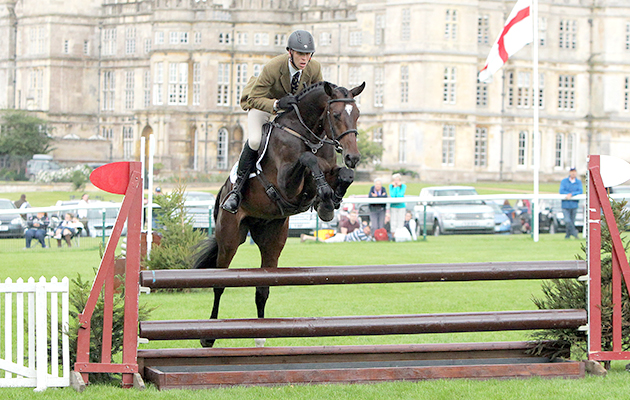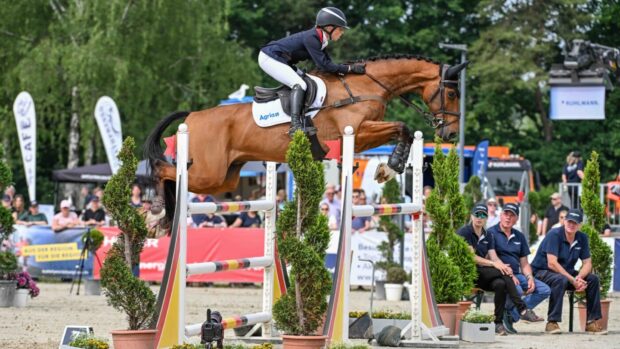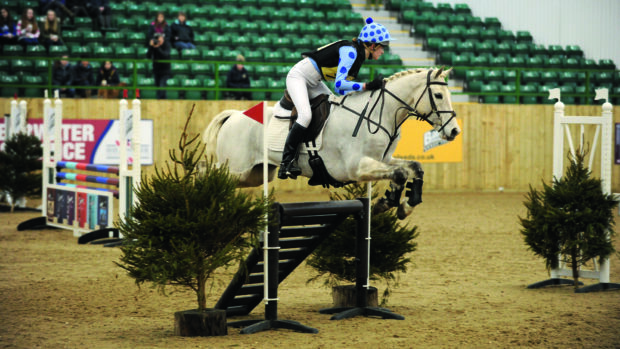Event rider and coach Nick Gauntlett (pictured) explains how you can use poles to improve the rhythm that will give horse and rider confidence in their approach to a fence
Aim
The aim of the exercise is to help the rider stay in a level rhythm as they approach a fence. My feeling is that too many riders focus on trying to see a stride when in fact, riding in a really good rhythm, with energy and with good balance is far more important than the spot you actually get to.
An exercise to improve horse’s rhythm over fences
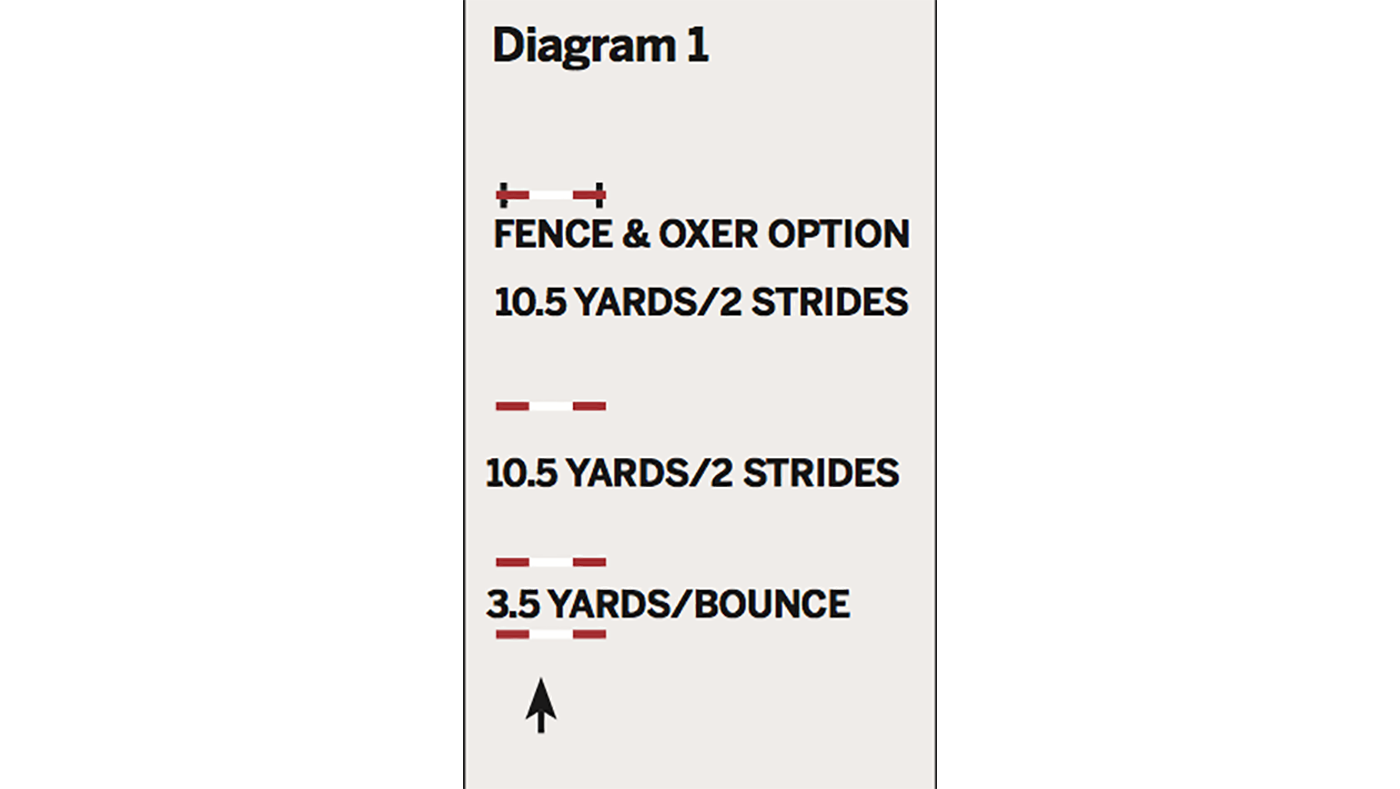
1. Set up the poles as per diagram one. On the long side establish a good canter and really ride the power through the turn. If you don’t meet the first pole perfectly, don’t worry too much — the bounce will encourage your horse to meet the following pole in a good rhythm. Depending on the level of the horse, the height of the fence can be increased or the upright can be expanded to an oxer once you’ve checked the horse is happy and in good rhythm.
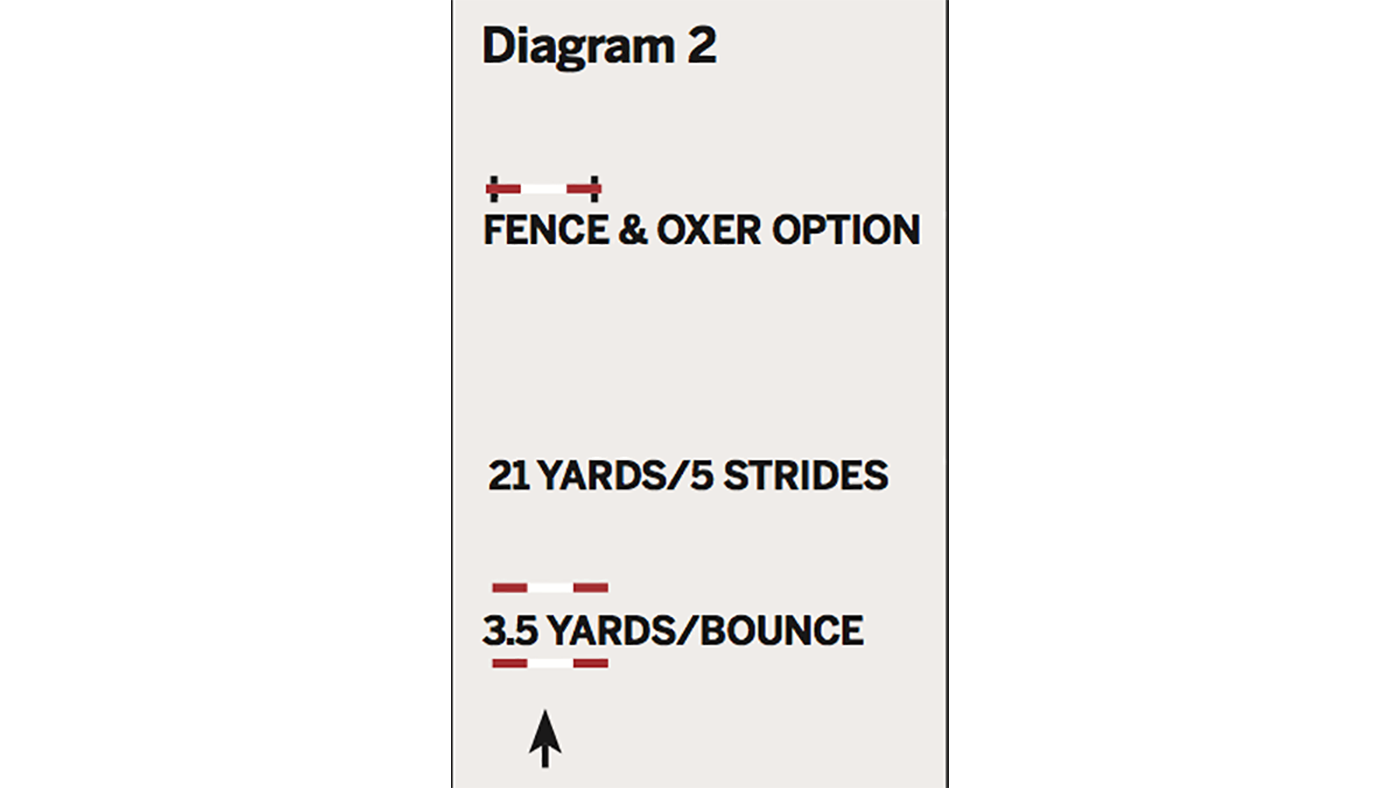
2. The exercise can then be progressed by removing the pole which is 10.5 yards from the fence (diagram two). Rather than just riding two strides on your own, and using the third pole as a check and measure, see if you can make it to the fence in five strides after the second pole. If you lose rhythm, put the pole back in.
3. A lot of riders jump the first fence of a course really well and then get a little onward-bound, tending to land in a canter that isn’t as good as the one they took off from. To correct this, try jumping the line in the opposite direction, fence first, then the poles. Initially lose the 10.5-yard pole after the fence to give yourself a little more time to find the rhythm. The remaining poles act as a visual aid for the rider to land, make a half-halt and put the horse back together in time to ride the pole, bounce, pole.
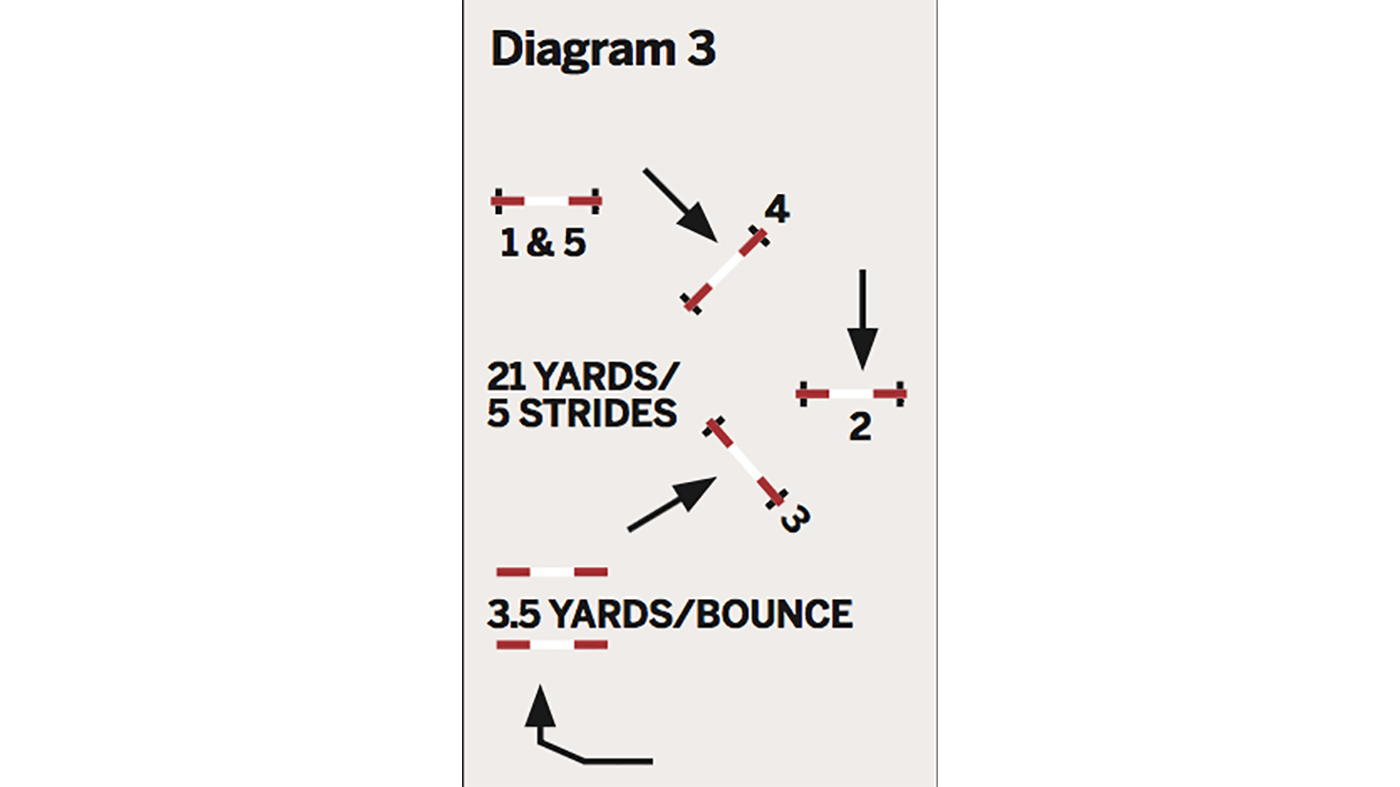
4. Put up a fence on the other side of the arena (diagram three) and keep the template that’s set out for you in the approach to fence one in your mind’s eye, making sure you keep the canter level and maintaining the rhythm to fence two. From here you can build a course of fences, using the poles to remind you (at fence one and fence five) to keep that lovely rhythm within the canter.
Article continues below…
You might also be interested in:

#SundaySchool: Jumping a horse on an angle with Francis Whittington
This simple exercise provides a solid foundation for skinnies and arrowheads to help you when jumping a horse on an

Sarah Bullimore’s figure-of-eight jumping exercise for focus
The five-star eventer shows how the figure-of-eight jumping exercise can help develop balance, rhythm and the ability to land on

Subscribe to Horse & Hound magazine today – and enjoy unlimited website access all year round
Tips and pitfalls: maintaining the horse’s rhythm over fences
- This exercise requires someone on the ground. If you clip a pole and it moves, the second time you come round the striding will be wrong and you’ll get into trouble.
- It’s very easy to turn five strides into four or six — and then you’re not staying in that level canter you’re trying to establish. Don’t let the poles do all the work — it’s good discipline to count your poles and strides out loud.
- Try to establish a good canter at the start. In an ideal world the poles are to prove you right, not to fix everything.
For all the latest equestrian news and reports, don’t miss Horse & Hound magazine, out every Thursday
